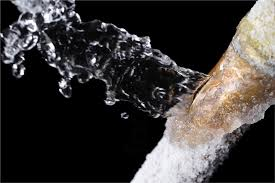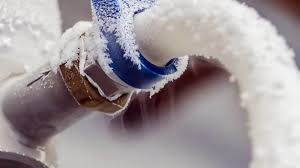When winter strikes, the last thing you want to be dealing with is frozen and burst pipes. You might think that frozen pipes are only an issue in cold climates, but even warmer places can experience freezing weather and it’s generally worse for the pipes as they may not have been properly insulated.
When a pipe becomes frozen, it affects the water flow but that isn’t all. Frozen pipes are more prone to bursting, causing damage and flooding. Here are some handy hints to protect your pipes this winter:
Whether you are staying in or going away, leaving your heating on low can help prevent pipes from freezing. It might go against the grain to leave heating on, especially if you won’t be at the property but it’s cheaper than dealing with water damage should the worst happen! The heating only needs to be set low, just enough to keep the pipes warm enough to not freeze over.
Leaving a tap gently dripping is another tip for avoiding a frozen pipe. Letting a tap remain open will ease any pressure in the system from building up, as it’s the pressure between tap and blockage which causes a pipe to burst.
Pipes are most often tucked away in cabinets or cupboards. Leaving these cupboard doors open is a clever way to let the warm air from the rest of the house circulate around the pipes and avoid any freezing issues. Leaving open inside doors also helps to keep warm air circulating.
If you can get to your pipes easily then electrical heating tape can be applied to them to prevent freezing. There are different types of tape, some reacting when heat is needed and others that must be plugged in. Always follow the instructions and apply the tape safely.
If you have pipes which are exposed, such as in a loft or basement, then they would benefit from additional insulation if very cold temperatures are expected. For types of Pipe protectors, visit www.meterbox.co.uk/pipe-protectors Foam or fibreglass padding can be easily applied which will lessen the risk of freezing pipes. You might want to consider additional insulation in walls and ceilings too, so you never need to worry about excessive cold exposure on your pipes.
If you notice any gaps or holes near your pipes, you might want to seal them up with some caulk. Ideally this needs to be done on both external and internal walls to help keep cold air out and trap warm air in.

